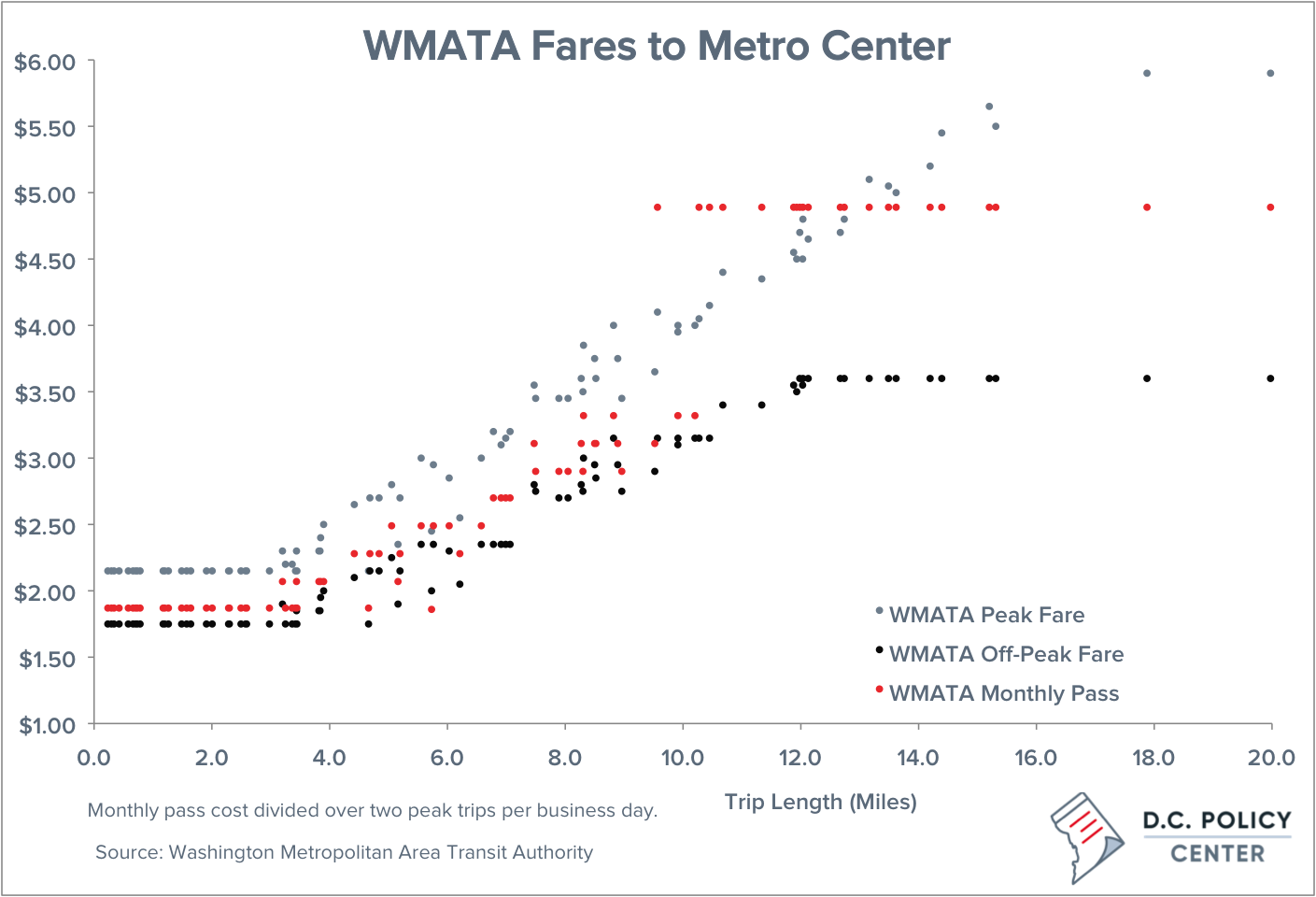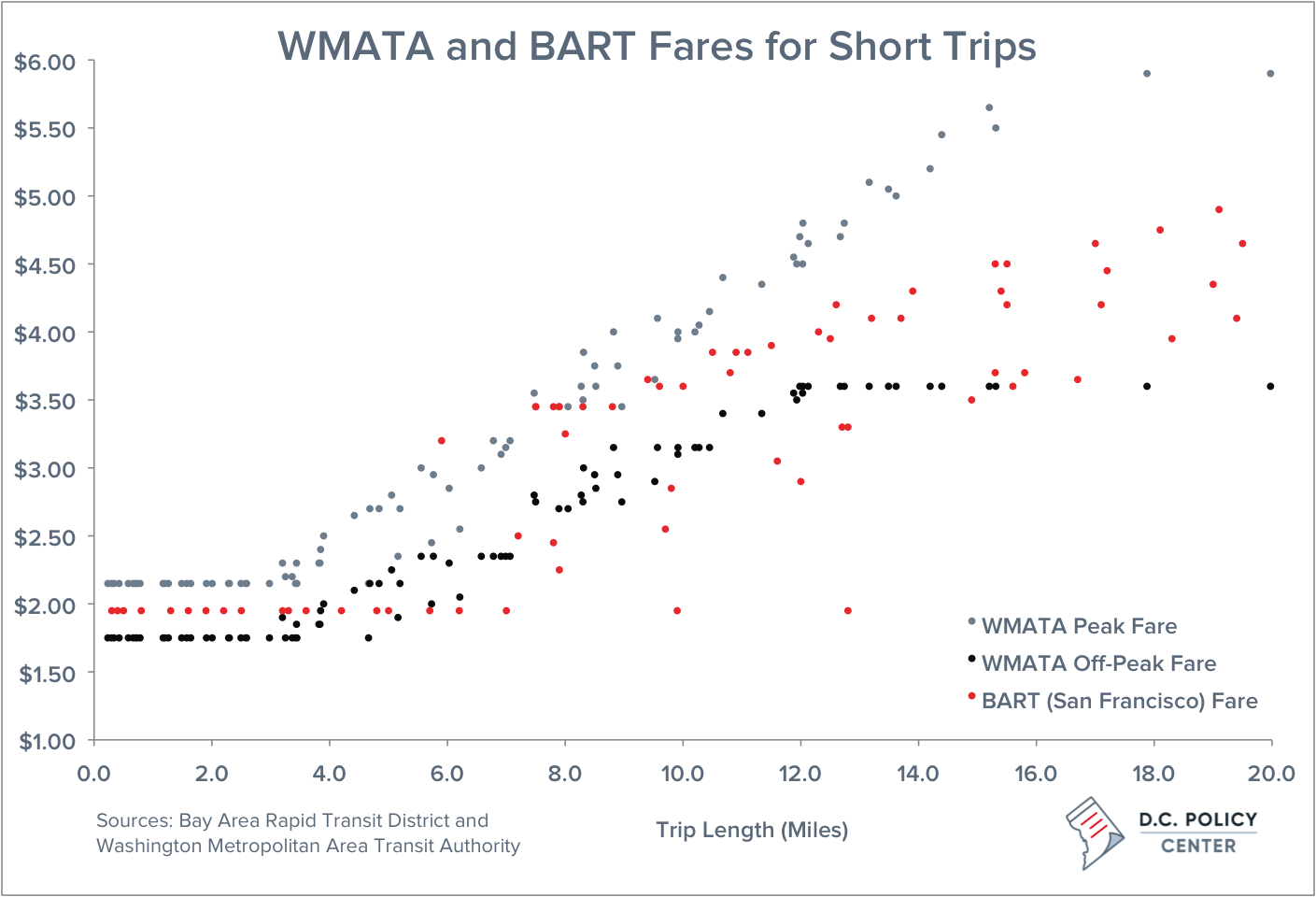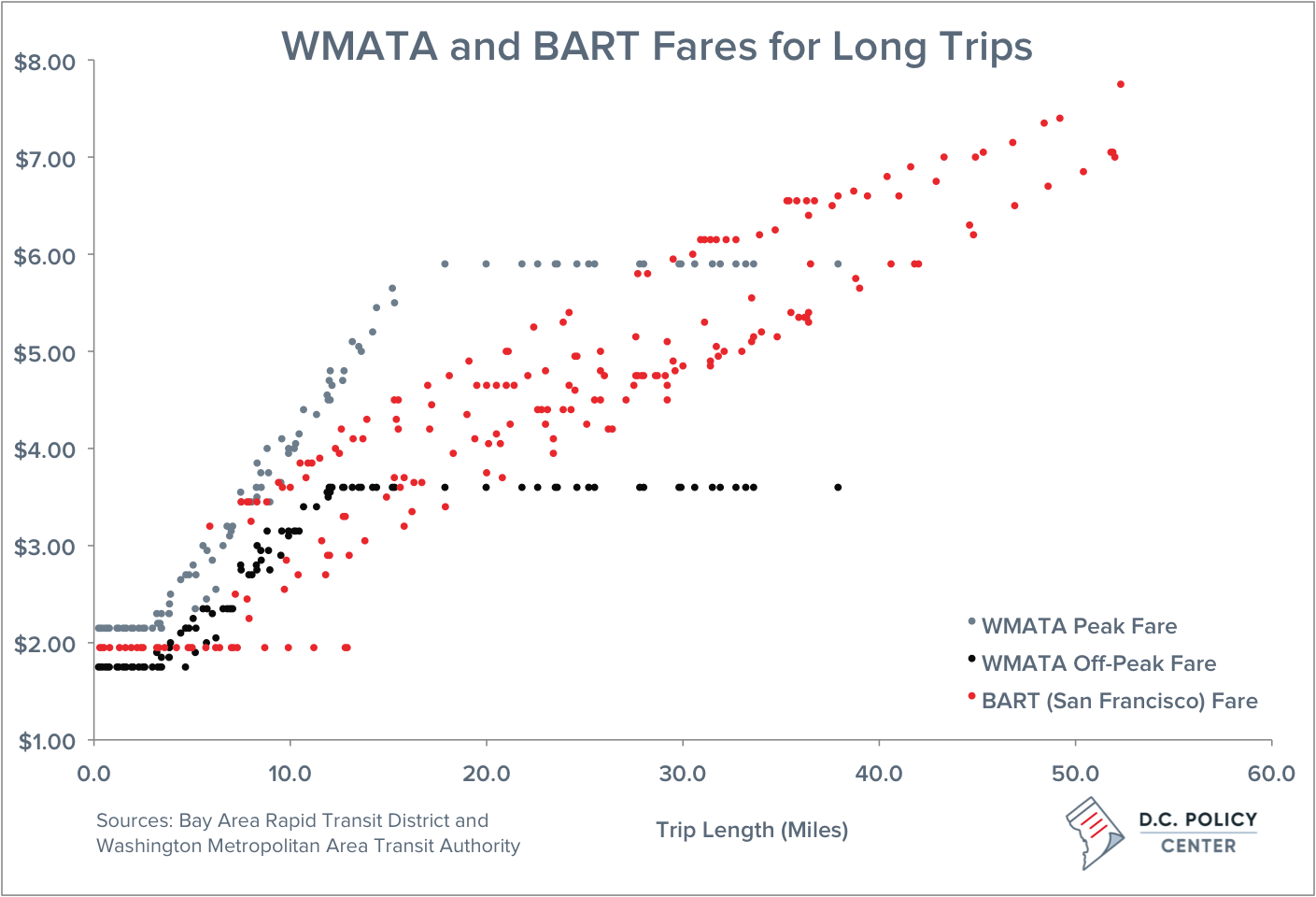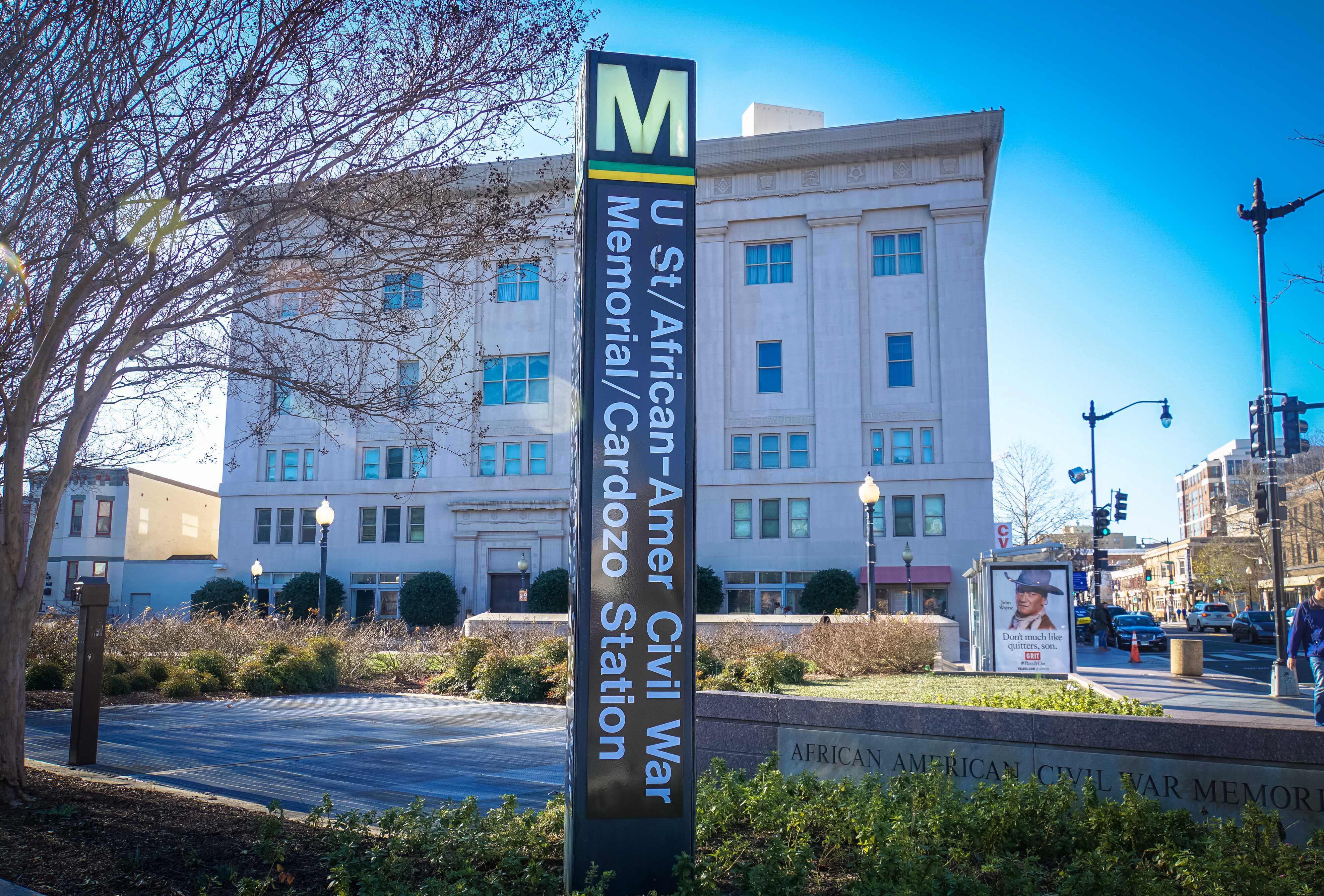In what has become a yearly ritual, WMATA’s fiscal year 2018 budget proposes Metrorail service cuts and fare increases: up to $0.10 for rush-hour trips and $0.25 for non-rush-hour trips. Determining the “right” level for transit fares is a complicated and, ultimately, political question: it depends on governments’ willingness to provide tax subsidies, and the balance between maximizing farebox recovery (how much of the system’s costs are paid by riders) and achieving public policy goals such as affordability, eliminating congestion, or pollution reduction.
One natural way to think about Metrorail’s fares is to try to compare them to fares on other American rapid transit systems. Such comparisons are not straightforward: the US’s dozen or so rapid transit systems differ in terms of funding mechanisms, the history and state of their infrastructure, and the demographics and geography of the urban areas they serve.
Metrorail’s fare structure is unique among American rapid transit systems in that, not only does it have distance-dependent fares (only BART in San Francisco and the PATCO Speedline in Philadelphia share this trait), but it charges higher “peak” fares during weekday rush hours (system opening to 9:30am and 3:00pm to 7:00pm) and lower “non-peak” fares at other times, a trait common among commuter rail systems but otherwise unknown in American rapid transit.

Technically, Metrorail fares don’t depend on distance traveled, but rather on “composite mileage,” the average of distance traveled and the distance between the entry and exit stations “as the crow flies.”
Trips of less than three “composite miles” are charged a fixed minimum fare—$2.15 at peak, when two-thirds of the system’s riders ride—and $1.75 the rest of the time. The maximum fare is capped, too. During rush hour, the maximum fare is capped at $5.90, the cost of the trip from Metro Center to Shady Grove or Wiehe-Reston East. The non-rush-hour fare is capped at $3.60. Because of these caps, the longest possible trips through the system——from the end of one line to the end of another——don’t cost any more than the longest trips to downtown.
The usual explanation for Metrorail’s use of distance-dependent fares, when most American rapid transit systems charge a flat fare, is that Metrorail serves communities further out in the suburbs than most other rapid transit systems, and it is unreasonable to charge riders the same amount for a twenty-mile trip from outside the Beltway as for a short trip across downtown. This also means fare comparisons across systems would make sense only if one controls for distance.
While most American rapid transit systems are smaller than WMATA, we can compare their fares to WMATA’s fares for short trips. Miami Metrorail, Boston’s T, Chicago’s L, MARTA in Atlanta, and PATH from New York to Newark each reach about ten miles from their downtown termini and charge flat fares of $2.25 to $2.50.
These fares are only slightly higher than Metro’s minimum rush-hour fare of $2.15 for trips under three “composite miles.” On the other hand, a peak trip of ten miles would cost about $4.00 on Metrorail, and a non-peak one would cost over $3.00.
The highest flat fare for an American rapid transit system is the $2.75 fare on the New York City Subway, which reaches as far as fifteen miles from the city’s central business districts, as far as most Metrorail lines reach from downtown DC.
Meanwhile, subway fares in Philadelphia ($1.80) and Baltimore ($1.70) are comparable to Metrorail’s minimum off-peak fare and lower than the minimum peak fare.

Since San Francisco’s BART and Philadelphia’s PATCO Speedline to Camden and suburban New Jersey also charge distance-based fares, they are more directly comparable to Metrorail. PATCO is a small system, and its fares range from $1.40 for short trips within Philadelphia and Camden to $3.00 for the longest possible trip, of fourteen miles. These fares are consistently lower than even WMATA off-peak fares.
BART’s fare structure is significantly more complicated than Metrorail’s: distance-based fares are combined with a number of surcharges for trips that pass through or terminate at certain parts of the system. For trips under twenty miles, BART fares are comparable to Metrorail off-peak fares and significantly lower than Metrorail peak fares.

By comparing WMATA and BART fares for trips up to the longest trips possible on each system, we can get a clearer picture of the relatively different fare profiles of these two suburban rapid transit systems. Both systems use a minimum fare for short trips, but Metrorail’s minimum fare at rush hour is higher than BART’s, and is limited to a significantly shorter distance. While Metrorail charges a minimum fare for trips up to three miles, BART’s minimum fare includes all trips up to six miles, and some suburban trips up to twelve miles.
Metrorail fares increase almost twice as steeply with distance as BART fares, and a twenty-mile peak trip on Metro costs over a dollar more than on BART. However, since Metrorail peak fares are capped at $5.90 and BART fares have no cap, trips to downtown San Francisco from BART’s outermost stations over thirty miles away are more expensive than comparable-length peak trips on Metro, and suburb-to-suburb trips across the BART system can be even more expensive than that.
Increases in Metrorail fares may be hard to avoid, given the system’s maintenance backlog and the limited subsidies available from the District, Maryland, Virginia, and the Federal government, but it is important to keep in mind that our area already has some of the highest rail transit fares in the country.
